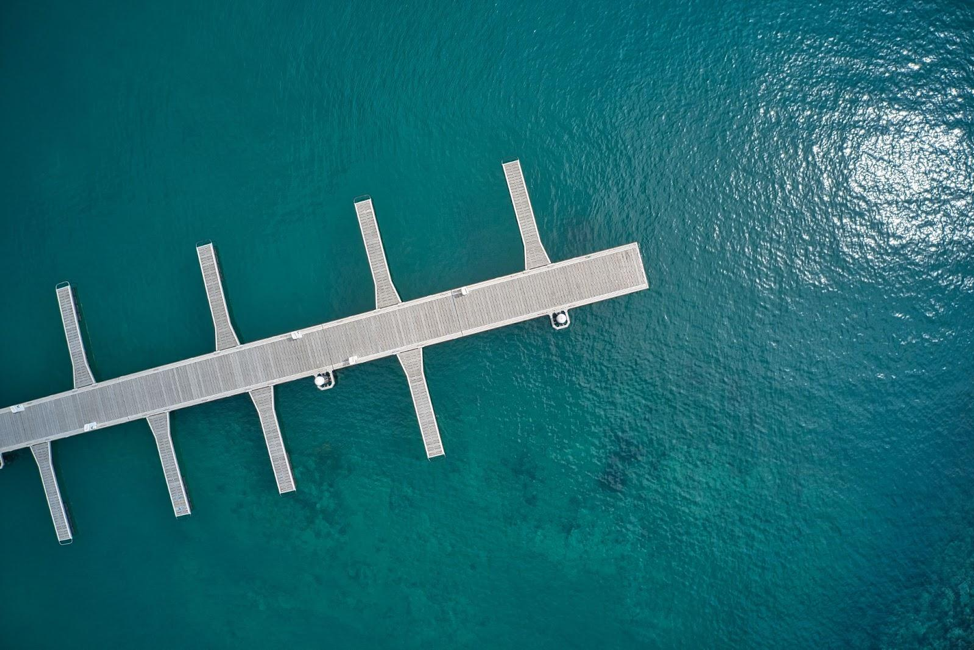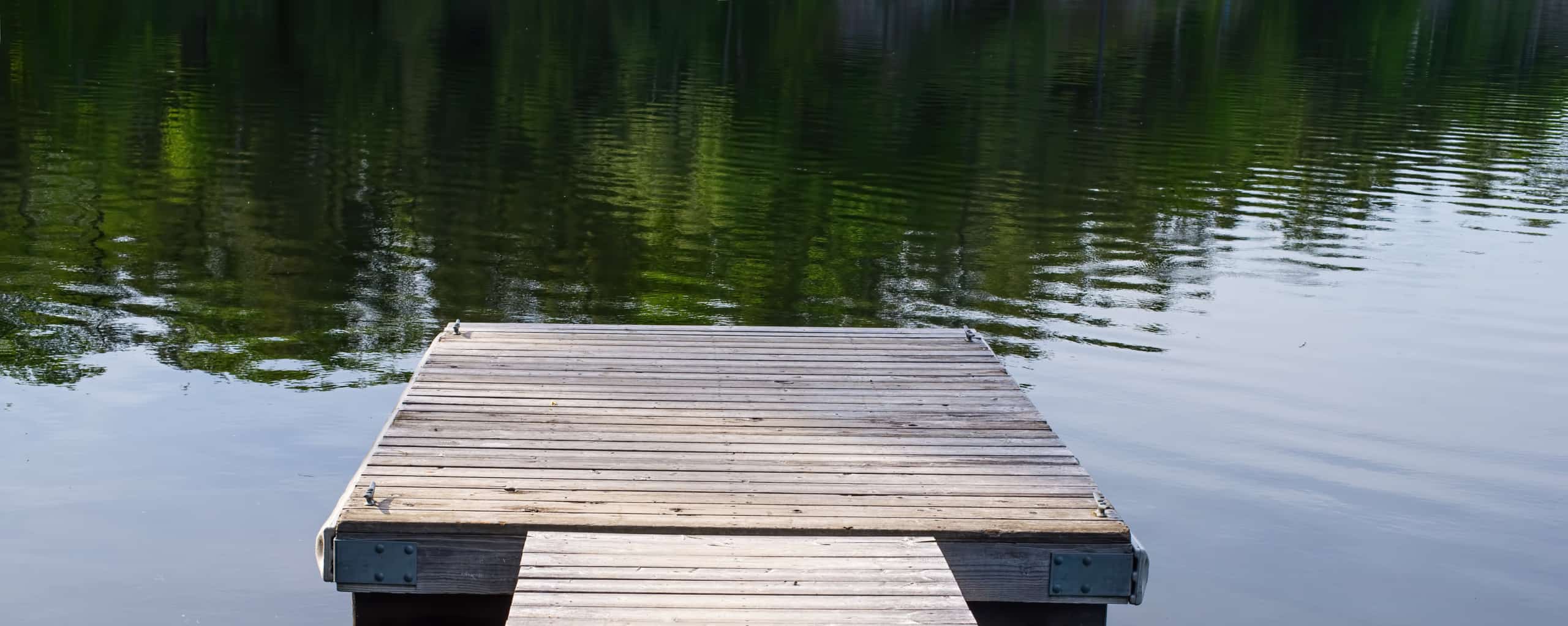Exactly How Floating Dock Company Know-how Can Elevate Your Waterside Experience
Produce the Perfect Docking Service With Floating Docks
Floating docks present a versatile solution for a range of maritime needs, adjusting seamlessly to fluctuating water degrees and varied vessel kinds. As we check out the vital elements that contribute to the performance of floating docks, a number of key factors pertaining to security and maintenance will emerge, elevating concerns regarding how to optimize your docking experience.

Advantages of Floating Docks
Floating docks deal many advantages that make them an optimal choice for different maritime applications. Unlike taken care of docks, floating docks rise and fall with the trend, ensuring regular ease of access for vessels.
Furthermore, floating docks are normally simpler and quicker to install compared to conventional set structures. Their modular style enables for straightforward assembly and disassembly, promoting maintenance and relocation when needed. This versatility is specifically helpful for momentary applications or in environments where conditions may change.
Floating docks likewise have a tendency to be extra eco-friendly, as they minimize disturbance to the seabed and surrounding marine ecological communities. Their resilient nature decreases the risk of damages to aquatic life, advertising a much healthier environment. These docks can be personalized to accommodate various vessel dimensions, guaranteeing that they fulfill specific operational needs.
Inevitably, the mix of flexibility, simplicity of installment, and environmental factors to consider makes floating docks an extremely reliable solution for a wide variety of maritime demands.
Choosing the Right Products
Choosing the appropriate products for floating docks is crucial to guarantee longevity, sturdiness, and security. The selection of products directly affects the dock's efficiency in numerous ecological conditions, consisting of exposure to water, sunlight, and potential wear from aquatic web traffic.
Usual products used for floating docks consist of light weight aluminum, wood, and high-density polyethylene (HDPE) Light weight aluminum is lightweight, corrosion-resistant, and needs marginal upkeep, making it an excellent option for longevity. Nonetheless, its initial price can be greater contrasted to other products.
Wood, while aesthetically enticing and giving a typical appearance, can be vulnerable to rot and insect damage if not effectively dealt with. For that reason, using pressure-treated timber or naturally resilient types like cedar or redwood can reduce these problems.
HDPE is a preferred choice as a result of its resistance to UV rays and chemicals, together with being eco-friendly. dock company. It is lightweight and available in various colors, permitting modification
Ultimately, the appropriate material selection will rely on details demands, including budget, desired aesthetic appeals, and ecological considerations. Cautious analysis of these aspects will result in a effective and resistant floating dock service.
Style Considerations for Stability
When developing floating docks, guaranteeing security is a fundamental element that can significantly affect their capability and safety. Stability in floating dock style is influenced by numerous variables, including buoyancy, weight circulation, and the setup of parts.
Weight circulation is essential; evenly distributing loads across the dock avoids tilting and improves security. Broader layouts can offer increased security, particularly in harsh water problems, while longer docks may need additional assistances to avoid sagging.
An additional crucial factor to consider is the environmental influence, consisting of wave activity and wind. Integrating functions such as sidewalls or skirting can assist reduce the results of environmental forces, keeping security in unfavorable conditions. Inevitably, a combination of thoughtful style, material selection, and understanding of environmental factors will certainly generate a floating dock that meets both stability and safety requirements.
Installation Tips and Strategies

Following, protect the needed permits and stick to neighborhood laws, which may determine installment methods and ecological factors to consider. Involve a qualified specialist experienced in floating dock setups if required. Use you can try this out high-grade materials designed for marine atmospheres to enhance sturdiness and long life.
When placing the dock, align it alongside the shoreline to assist in simple accessibility. Make certain that the anchoring system is robust, utilizing Get More Info cinder block or helical anchors to stabilize the dock against wind and wave activity. It's crucial to make up seasonal water level changes, including prospective ice movement in cooler climates.
Throughout the setup, ascertain the dock's floatation and security before completing the anchoring. On a regular basis examine the installation for any kind of indicators of wear or damages. By following these strategies and pointers, you can accomplish a safe, functional, and cosmetically pleasing floating dock setup that meets your needs.
Maintenance and Treatment Guidelines
Caring and preserving for floating docks is important to prolonging their lifespan and ensuring safe usage. Routine inspections must be carried out to determine any indicators of wear, damage, or marine growth. Seek fractures, loose fittings, or discolored areas on the dock's surface, as these issues can jeopardize structural stability.
Cleaning up is essential. Use a pressure washer to remove algae, barnacles, and debris, which can gather with time. For persistent growth, take into consideration eco-friendly cleaner that will not damage marine life.
In addition, inspect the mooring lines and supports regularly to guarantee they are totally free and safe and secure from rust. Replace any kind of frayed or damaged lines immediately to preserve stability.
Throughout severe weather, such as storms or freezing conditions, take preventive steps. Safeguard the dock with added mooring lines and, if possible, eliminate any kind of detachable elements to stop damages.
Conclusion
In conclusion, the application of floating docks presents a efficient and flexible docking service ideal for different maritime applications. With correct setup and normal upkeep, floating docks can provide reliable and trustworthy docking experiences for a wide range of vessels.
As we check out the vital components that contribute to the performance of try this site floating docks, a number of vital aspects concerning security and upkeep will certainly arise, raising concerns regarding just how to maximize your docking experience. Unlike fixed docks, floating docks increase and fall with the trend, making certain consistent accessibility for vessels.When creating floating docks, guaranteeing stability is a fundamental facet that can substantially influence their performance and safety and security. Security in floating dock layout is influenced by different factors, consisting of buoyancy, weight distribution, and the plan of parts. Ultimately, a combination of thoughtful layout, material selection, and understanding of environmental factors will certainly produce a drifting dock that meets both stability and safety demands.